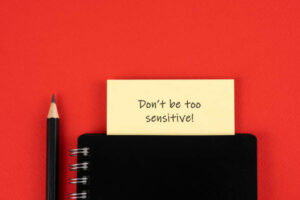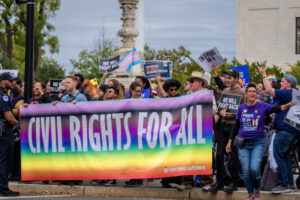
Introduction:
In today’s professional landscape, misconduct at work can have severe consequences for both employees and organizations. It’s essential for employees to understand the various forms of misconduct, their implications, and how to navigate such situations effectively. This article will shed light on the different aspects of misconduct from an employee’s perspective and provide guidance on how to address and prevent such behavior in the workplace.
Understanding Misconduct at Work:
a. Defining Misconduct. Exploring the broad spectrum of behaviors that can be classified as misconduct, including harassment, discrimination, bullying, and unethical conduct.
b. Recognizing Red Flags. Identifying common signs of misconduct, such as hostile work environments, unfair treatment, verbal or physical abuse, or misuse of power.
The Impact of Misconduct:
a. Emotional and Psychological Consequences. Discussing the detrimental effects of misconduct on an employee’s mental well-being, job satisfaction, and overall productivity.
b. Professional Consequences. Highlighting the potential career setbacks that employees may face due to misconduct, including damaged reputation, missed opportunities, and strained relationships with colleagues.
Addressing Misconduct:
a. Documenting Incidents. Emphasizing the importance of maintaining a record of misconduct incidents, including dates, times, locations, individuals involved, and a detailed description of the events.
b. Reporting the Misconduct. Outlining the steps employees can take to report misconduct, including understanding company policies, identifying appropriate channels (such as HR or supervisors), and maintaining confidentiality if necessary.
c. Seeking Support. Encouraging employees to reach out to trusted colleagues, mentors, or employee assistance programs for guidance and emotional support during difficult times.
Navigating the Resolution Process:
a. Investigations and Disciplinary Actions. Discussing the potential steps taken by the organization to address misconduct, such as conducting thorough investigations, disciplinary measures, and implementing corrective actions.
b. Confidentiality and Whistleblower Protection. Highlighting the importance of confidentiality in the process and the legal protections available to employees who report misconduct.
Preventing Misconduct:
a. Promoting a Positive Work Culture. Emphasizing the significance of fostering a culture of respect, inclusivity, and open communication within the organization.
b. Training and Education. Encouraging organizations to provide comprehensive training programs on appropriate workplace behavior, diversity and inclusion, conflict resolution, and ethical conduct.
c. Encouraging Reporting: Discussing the importance of creating an environment where employees feel comfortable reporting misconduct without fear of retaliation.

Case Studies
Case Study 1: Inappropriate Conduct by a Supervisor at Acme Manufacturing
Maria, an employee at Acme Manufacturing, experiences unwanted advances and inappropriate comments from her supervisor. Despite feeling uncomfortable, she decides to report the misconduct to the HR department at Acme Manufacturing. The company conducts a thorough investigation, ensuring confidentiality, and finds evidence supporting Maria’s claims. The supervisor at Acme Manufacturing is held accountable through appropriate disciplinary measures, creating a safer work environment for Maria and her colleagues.
Case Study 2: Discrimination in Hiring Practices at Tech Innovators
John, a job applicant, discovers that he was not selected for a position at Tech Innovators despite being highly qualified. He suspects age discrimination as he noticed several younger candidates receiving offers. John files a complaint with the Equal Employment Opportunity Commission (EEOC) and provides supporting evidence. The EEOC investigates the case, uncovers discriminatory practices at Tech Innovators, and takes appropriate legal action against the company, promoting fair and unbiased hiring practices.
Case Study 3: Cyberbullying and Online Harassment at GlobalTech Solutions
Emma, an employee at GlobalTech Solutions, becomes a target of cyberbullying and online harassment by an anonymous coworker through social media platforms. Feeling distressed, Emma collects evidence of the harassment and reports the issue to the company’s IT department and HR at GlobalTech Solutions. They work together to identify the perpetrator and take necessary disciplinary actions. GlobalTech Solutions also implements stricter policies to prevent cyberbullying and provides employees with resources for online safety and reporting incidents.
Case Study 4: Unethical Conduct in Sales Department at Stellar Solutions
Mark, a sales representative at Stellar Solutions, becomes aware of fraudulent activities within his sales team, where members are artificially inflating sales figures to meet targets. Concerned about the consequences and impact on Stellar Solutions’ reputation, Mark gathers evidence and reports the misconduct to senior management and the legal department at Stellar Solutions. The company launches an internal investigation, terminates the responsible employees, and establishes stronger internal controls and ethics training to prevent similar incidents in the future.
Case Study 5: Retaliation for Reporting Safety Violations at SafeWare Industries
Sarah, a warehouse worker at SafeWare Industries, discovers multiple safety violations that put employees at risk of accidents. She reports the violations to her supervisor and the company’s safety committee at SafeWare Industries. However, instead of addressing the issues, Sarah faces retaliation from her immediate supervisor, who assigns her more hazardous tasks. Recognizing the severity of the situation, the HR department at SafeWare Industries intervenes, protects Sarah from further retaliation, and implements measures to ensure a safe working environment for all employees.

Recommendation: Foster a Culture of Respect, Accountability, and Transparency
To effectively address and prevent misconduct at work, it is crucial for organizations to foster a culture of respect, accountability, and transparency. By implementing the following recommendations, companies can create an environment where employees feel safe, valued, and supported:
Establish Clear Policies and Procedures: Develop comprehensive policies and procedures that clearly define acceptable behavior, explicitly state the consequences of misconduct, and provide guidelines for reporting incidents. Ensure these policies are easily accessible to all employees.
Train Employees on Appropriate Conduct: Provide regular training programs that educate employees about appropriate workplace behavior, including topics such as diversity and inclusion, conflict resolution, ethical conduct, and recognizing and preventing misconduct. Reinforce the organization’s commitment to a respectful work environment.
Encourage Reporting and Whistleblower Protection: Create a culture that encourages employees to report misconduct without fear of retaliation. Establish multiple reporting channels, ensure confidentiality, and implement robust whistleblower protection policies. Communicate to employees that reporting misconduct is valued and will be taken seriously.

Conduct Thorough and Impartial Investigations:
Ensure that all reported incidents of misconduct are promptly and thoroughly investigated by unbiased professionals. Use a structured and fair investigative process to gather evidence, interview relevant parties, and reach objective conclusions. Take appropriate disciplinary action against those found responsible.
Support and Empower Employees: Establish support mechanisms, such as employee assistance programs (EAPs) or dedicated helplines, to provide confidential counseling and resources for employees who have experienced or witnessed misconduct. Promote awareness of these resources and ensure they are readily available.
Lead by Example: Leadership must set a positive example by consistently demonstrating ethical conduct, respectful behavior, and accountability. Executives and managers should actively promote a culture of integrity and promptly address any signs of misconduct or inappropriate behavior within their teams.
Regularly Evaluate and Improve Policies: Continuously review and update policies, procedures, and training programs to stay current with evolving best practices and legal requirements. Seek feedback from employees, conduct surveys, and make necessary improvements to prevent and address misconduct effectively.
Regularly Communicate Organizational Values: Reinforce the organization’s values and code of conduct through regular communication channels such as newsletters, intranet updates, and team meetings. Highlight the importance of respectful behavior, ethical conduct, and zero tolerance for misconduct.
Encourage Open Dialogue and Feedback: Create opportunities for open dialogue and feedback within the organization. Encourage employees to voice concerns, provide suggestions, and share their experiences related to workplace conduct. Actively listen to their feedback and take appropriate action to address any underlying issues.
Promote Diversity and Inclusion: Foster a diverse and inclusive work environment where employees feel valued and respected regardless of their background, gender, ethnicity, or other characteristics. Embrace diversity in hiring practices, provide equal opportunities for career growth, and celebrate different perspectives.

Positive interventions for misconduct at work
Conduct Regular Climate Surveys: Implement regular climate surveys to gauge employee perceptions of the work environment, including their experiences related to misconduct. Analyze the survey data to identify patterns, areas for improvement, and trends that may require targeted interventions. Provide Support for Perpetrators to Change Behavior: In cases where individuals engage in misconduct but show potential for change, offer resources such as counseling, coaching, or training programs to address underlying issues and support their personal and professional development. This approach aims to prevent further misconduct and promote a culture of rehabilitation.
Establish Mediation and Conflict Resolution Processes: Develop mediation and conflict resolution processes to address disputes and conflicts in a fair and impartial manner. Encourage employees to resolve conflicts through dialogue, with the support of trained mediators, to prevent situations from escalating into misconduct. Conduct Regular Audits and Reviews: Regularly review internal systems, processes, and policies to identify any potential gaps that may contribute to or enable misconduct. Implement audits to ensure compliance with ethical and legal standards, and make necessary adjustments to prevent and address misconduct effectively.
Recognize and Celebrate Positive Behavior:
Implement recognition programs that acknowledge and celebrate employees who consistently demonstrate positive behavior, integrity, and professionalism. This reinforces the desired conduct and creates a culture where individuals are incentivized to uphold high ethical standards.
Remember, addressing misconduct at work requires a multi-faceted approach that involves proactive measures, continuous evaluation, and a commitment from all levels of the organization. By implementing these additional recommendations, organizations can create a workplace that is not only free from misconduct but also promotes positive relationships, growth, and mutual respect among employees.

Conclusion:
Misconduct at work can significantly impact an employee’s professional and personal life. By understanding the various forms of misconduct, recognizing red flags, and knowing how to navigate the resolution process, employees can protect themselves and contribute to a healthier work environment. Furthermore, organizations must prioritize the prevention of misconduct by promoting a positive work culture. And providing training that empowers employees to speak up against unacceptable behavior. Together, we can foster workplaces that are respectful, inclusive, and free from misconduct.
Final verdict
In final verdict, addressing and navigating misconduct at work is not just a moral obligation but also a strategic imperative for organizations. Scientific research in fields such as organizational psychology and behavioral economics reinforces the importance of maintaining a respectful and inclusive work environment. Studies consistently show that workplaces characterized by fairness, trust, and ethical behavior result in numerous benefits, including:
Increased Productivity. When employees feel safe, respected, and supported, they are more likely to be engaged and motivated in their work. A positive work environment reduces stress levels and fosters higher levels of productivity and innovation.
Enhanced Employee Well-being. Workplaces that actively address and prevent misconduct contribute to the overall well-being of employees. Psychological safety, a key component of a healthy work environment, is associated with improved mental health, job satisfaction, and overall quality of life.
Talent Attraction and Retention. Organizations that prioritize a culture of respect and accountability become magnets for top talent. Prospective employees are more likely to be attracted to organizations with reputations for promoting fairness, diversity, and a commitment to addressing misconduct.

Decreased Legal and Reputational Risks:
Failing to address misconduct can result in severe legal and reputational consequences for organizations. Lawsuits, damaged brand image, and loss of customer trust can be detrimental to long-term success. By proactively addressing misconduct, organizations minimize these risks.
Applying scientific principles, such as social exchange theory and moral psychology, organizations can create an environment that promotes positive behavior and prevents misconduct. By fostering a culture of fairness, accountability, and transparency, organizations tap into the inherent human need for belonging, justice, and ethical behavior.
In summary, prioritizing the navigation of misconduct at work benefits both employees and organizations. By embracing scientific insights and implementing evidence-based strategies, organizations can cultivate a work environment that maximizes productivity. Further enhances employee well-being, attracts top talent, and mitigates legal and reputational risks. Investing in a culture of respect and addressing misconduct is not only the right thing to do, but it also yields substantial long-term benefits for all stakeholders involved.
For all Fair work Commission concerns talk to us. If your the target of a workplace investigation, feeling forced to resign due to false allegations, bullied by adverse action, pick up that phonme and call now. You have nothing to lose and everything to gain.
Call 1800 333 666 for advice






